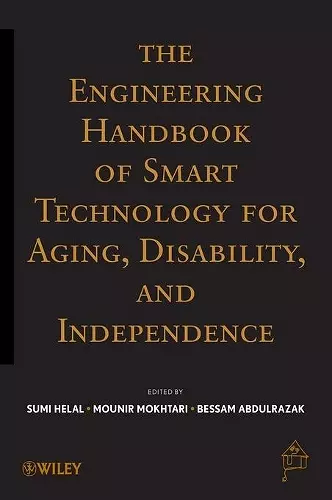The Engineering Handbook of Smart Technology for Aging, Disability, and Independence
Mounir Mokhtari editor Bessam Abdulrazak editor Abdelsalam Helal editor
Format:Hardback
Publisher:John Wiley & Sons Inc
Published:10th Oct '08
Currently unavailable, and unfortunately no date known when it will be back

An advanced look at smart technology to promote the independence of the elderly and disabled
Ongoing research and advancements in technology are essential for the continuing independence of elderly and disabled persons. The Engineering Handbook of Smart Technology for Aging, Disability, and Independence provides a thorough analysis of these technologies and the needs of the elderly and disabled, including a breakdown of demographics, government spending, growth rate, and much more.
Each chapter is written by an expert in his or her respective field, and gives readers unparalleled insight into the research and developments in a multitude of important areas, including:
- User-need analyses, classifications, and policies
- Assistive devices and systems for people with motor disabilities
- Assistive devices and systems for people with visual and hearing impairments
- Human-machine interaction and virtual reality
- Assistive robotics
- Technology for user mobility and object manipulation
- Smart homes as assistant environments
- A discussion of emerging standards and guidelines to build accessible devices, tools, and environments
This book is an indispensable resource for researchers and professionals in computer science, rehabilitation science, and clinical engineering. It also serves as a valuable textbook for graduate students in the aforementioned fields.
“This text is a resource for researchers, professionals, and graduate students in computer science, rehabilitation science, and clinical engineering.” (IEEE Microwave Magazine, June 2009)
"This handbook contains 49 papers, each approximately 20 pages in length. The eight-part volume covers introductory papers and policies, user needs and assistive technology, man-machine interaction, robot aids, user mobility, smart environmental technology, smart infrastructural applications, and standards and guidelines in design. Taken as a whole, the work offers a good introduction and survey of the needs and available technological remediation for the elderly and the disabled. The back cover of the volume includes the following statement: "This book is an indispensable resource for researchers and professionals in computer science, rehabilitation science, and clinical engineering. It also serves as a valuable textbook for graduate students in the aforementioned fields." However, this book is too much of a hodge-podge to be used for academic course work, and it lacks the content to be of much use to researchers and professionals in computer science. Summing Up: Recommended. Medical libraries serving professionals and practitioners." – A. M. Strauss, Vanderbilt University (CHOICE, March 2009)
ISBN: 9780471711551
Dimensions: 260mm x 185mm x 51mm
Weight: 1842g
968 pages